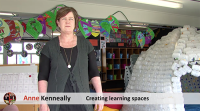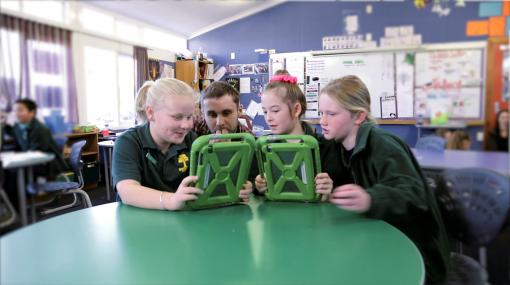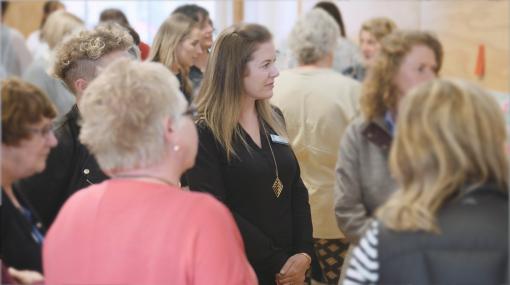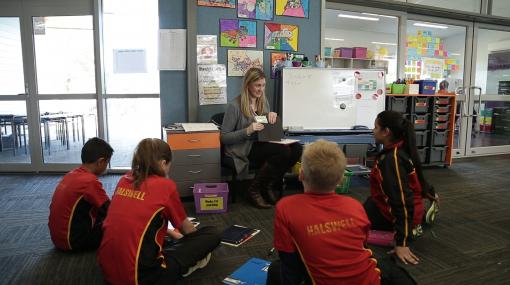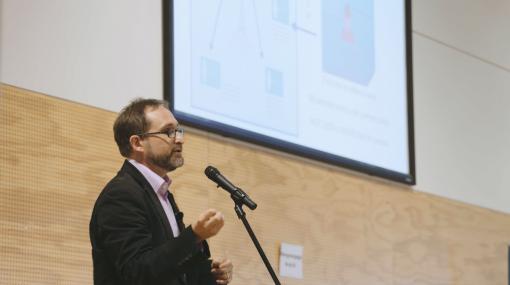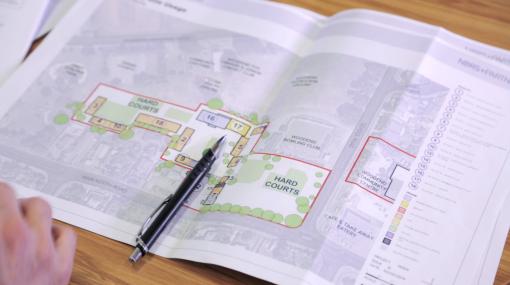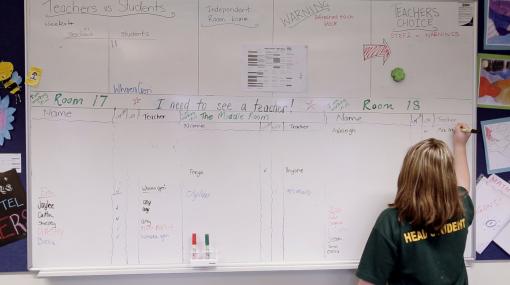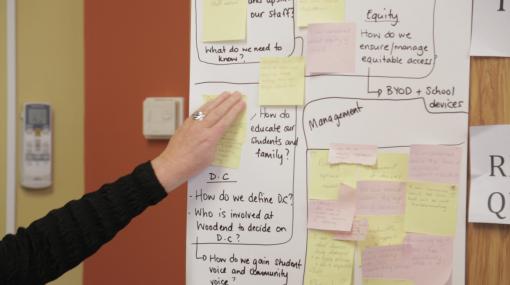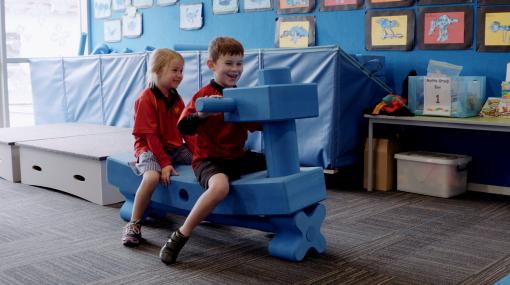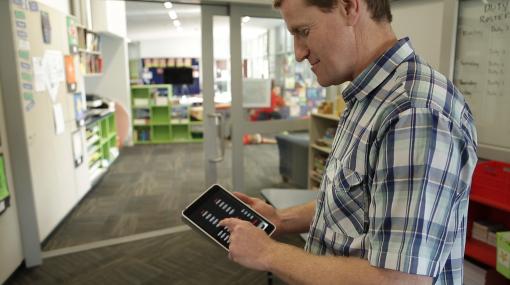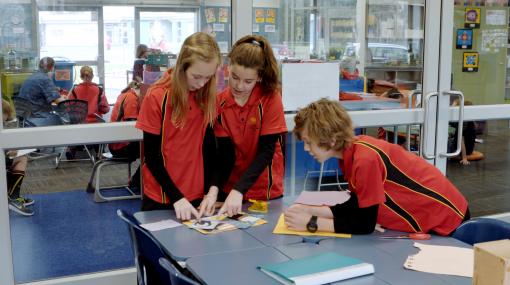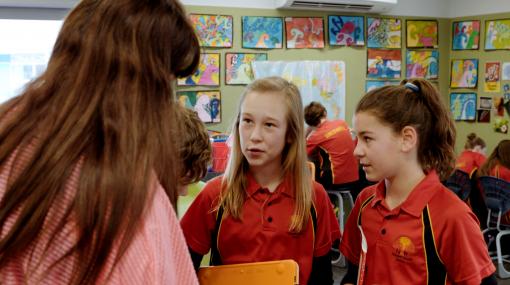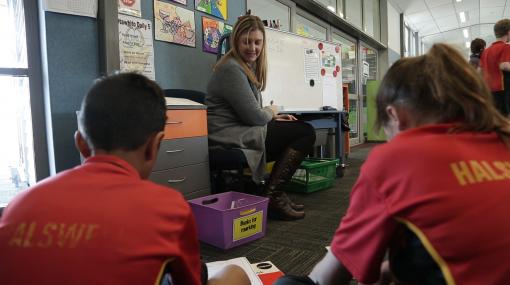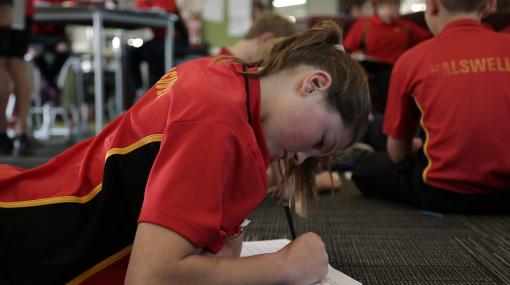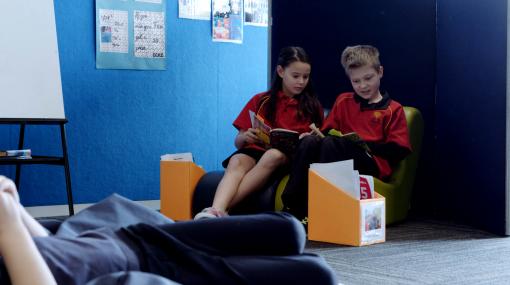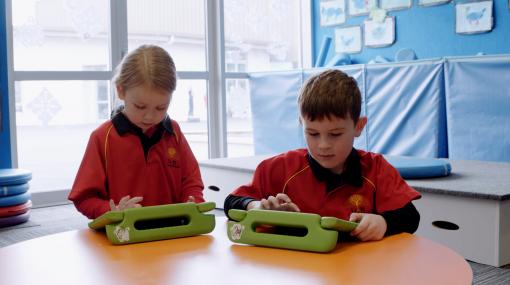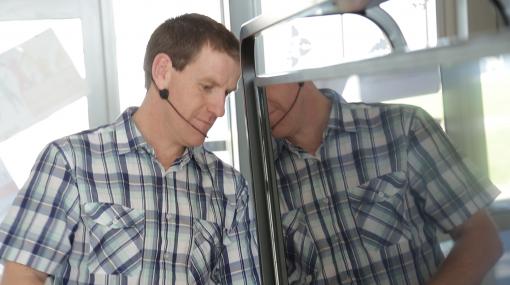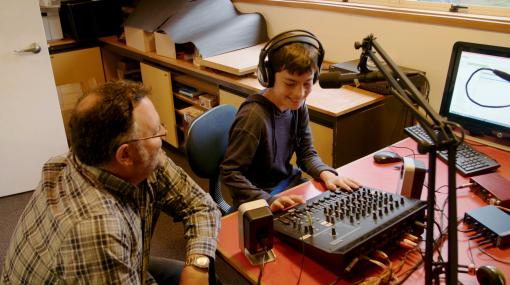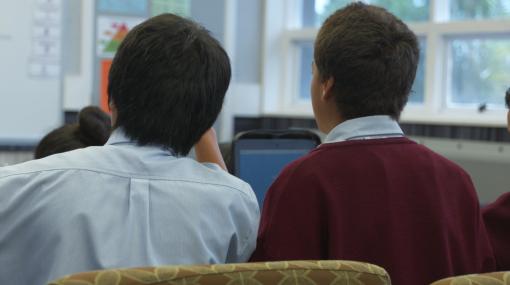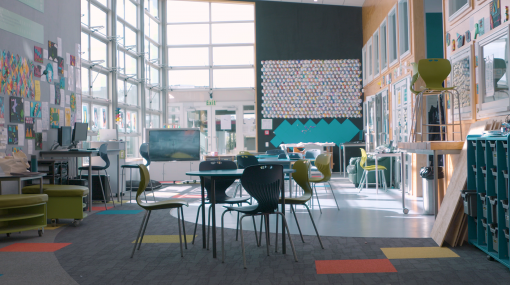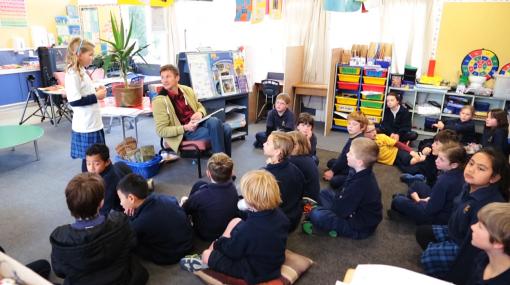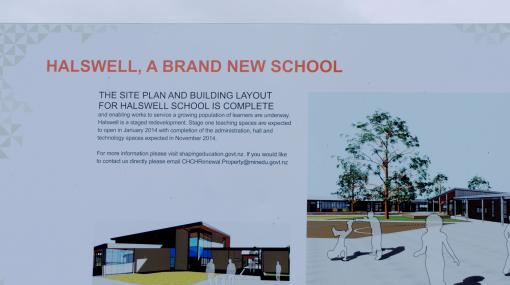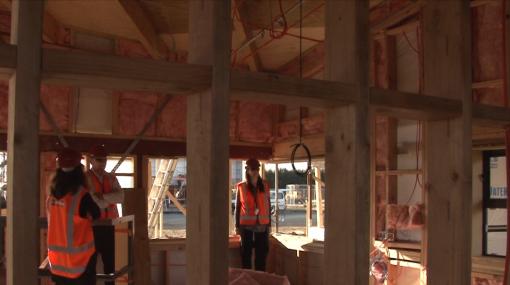Quality learning environments
Space, whether physical or virtual, can have an impact on learning. It can bring people together; it can encourage exploration, collaboration, and discussion.
Use the information in this section for identifying and planning how you can use digital technologies to support and include all learners in your quality learning environment.
What is a quality learning environment?
Innovative learning environment (ILE) is the term used to describe the wider ecosystem of people (social), practice (pedagogical) and physical/property.
Quality learning environment (QLE) relates to the physical (only) learning environment.
QLE and ILE overlap in the fitness for purpose of the physical environment, in terms of ensuring:
- the basic building blocks of a good physical environment are taken care of – acoustics, lighting, thermal comfort, and indoor air quality
- the property is aligned with the school’s social and pedagogical dimensions.
Quality learning environments support strengths-based teaching. They offer students and teachers flexibility, openness, and access to resources. Working in a quality learning environment where inquiries are shared, interventions devised collaboratively, and reflections based on both self and peer observations, leads to a more robust, continuously improving community of practice.
Digital technologies in ILEs
Digital technologies, when well used, can enhance all seven principles of learning.
Digital technologies:
- engage learners and reinforce learner-centredness and the key roles of emotions and motivation.
- facilitate collaboration and joint learning, including through the use of social media, underpinning the social nature of learning principle.
- facilitate differentiation through systematic tracking of individual learning paths, achievements, formative assessment and feedback.
- enable connections supporting horizontal connectedness.
Place the learner at the centre – Begin with a focus on student learning
When considering how to develop or improve your learning spaces, begin with a focus on student learning.
Mark Osborne (CORE Education) explains, the first step is to start with learning. Consider your school's vision for students, then identify the teaching strategies and environments that will help make that vision a reality.
Key things to consider
- What is your school’s vision for learning? How are the school community involved in this vision?
- What do you want learning to look like?
- How can learning spaces be used, modified or developed to facilitate these approaches to learning and teaching?
- How will technologies be incorporated so that all students are included?
- What resourcing and considerations are needed for planning an innovative learning environment?
Designing a quality learning environment that has the learner at the centre
Thoughtfully planned use of space with the right teaching strategies supports learning.
Students should be at the centre of your planning for flexible, multi-use spaces. Design flexible spaces that are respectful of, and responsive to, individual learner preferences, needs, and values, rather than requiring learners to fit your new system. Quality learning environments should provide greater opportunities for students to organise themselves and engage in learning.
Identify how different technologies and spaces can provide learning approaches that support all learners.
Involve students and their families in the planning process.
A study of innovative learning environments in Australia showed that when the classroom environment allowed teachers to teach in ways that were student-centred, often employing small group, needs-based teaching, student achievement increased (Imms & Byers, 2016).
Features of a well-designed learning environment
Research shows the key to an effective learning environment is the amount of flexibility provided by that environment. Design an environment that can accommodate the different ways in which ākonga learn. An effective environment offers a range of different zones or spaces.
- Think about using moveable walls, agile furniture and sliding doors to create different spaces (Imms, Mahat, Byers, & Murphy, 2017 ).
- Classrooms with breakout spaces or rooms attached impact positively on learning (Barrett et al., 2015 ).
Physical classroom layouts can act as a barrier to, or a conduit for, leveraging the potential of digital technologies with the aim of making them more effective pedagogically.
Consider in your design how you will:
- create a sense of belonging – through the design of spaces that encourage connection, enable student work to be displayed, provide signage in different languages, design elements that reflect the culture and cultural needs
- provide for collaboration and quiet spaces – through design that incorporates movable furniture and sliding doors, sound-absorbing materials, accommodates using digital devices
- connect students with the outdoors – provide light, connection to the outside and fresh air.
Consider your technology, and plan to future-proof. Research found that cloud-based information communication technology enabled a shared online approach to communications, particularly teachers’ collaborative planning and writing of reports (Fletcher, Everall, Mackey & Fickel, 2020 ).
Technology can:
- support the development of student-driven programmes and personalised learning pathways
- redefine who counts as a teacher, for example, to include online teachers or connections with experts online
- redefine grouping methods, facilitating different forms of student groupings, including rich mixes of small group work, individual study, community visits and virtual groups alongside traditional whole-class teaching
- transform content by introducing new, highly specialised and otherwise inaccessible resources, and enlarging potential resources beyond textbooks
- create digital and virtual spaces for learning that are easily accessible for individual and group access
- redefine assessment, which can be more sophisticated to include more systematic tracking of students’ learning and performance, and be shared and worked with in different ways to facilitate individual differentiation
- structure different allocations of time, including lesson time and homework
- extend teachers’ networks to provide them with the resources and people required to improve their capacity and skills to support innovative practice
- enable greater collaboration among educators through the sharing of materials, exemplars, evaluations or information about students, as well as practice and experience
- facilitate formative evaluation and change management, through the organisation and presentation of data and feedback
- support the development of innovative curricula by engaging other stakeholders as sources of knowledge.
Consider your physical environment to ensure the physical environment is optimal for learning. Poor acoustics impact learning, as do hot or cold, stuffy, or poorly lit environments.
- Ensure students watching videos have easy access to headphones. Modern acoustic modelling and treatments enable you to provide a range of different acoustic zones for quiet, conversational, and noisy activities that a diverse class might need to undertake over the course of a day (Von Ahlefeld, 2009 ).
- Consider lighting treatments that allow plenty of natural light but enable screens to be easily visible as well.
- Consider device storage and charging. Students will not be on devices all day, so where can they be safely stored, easily accessed, and charged?
More information »
- Acoustics in learning spaces (2020) – a blog post from the Innovative Learning Environments and Teacher Change project.
Developing a QLE as part of a new build
Buildings and spaces exist to support the activities that occur in them. When designing a building, careful thought should be given to making the building adaptable and agile enough to respond to both current and foreseeable future usage.
Ministry of Education information
Principal, Bruce Topham explains the key steps for Halswell School when planning, building, and creating an innovative learning environment that is part of the community. They:
- began with a strong leadership team researching ILEs
- worked with a good architect
- invested lots of time engaging with and consulting the community.
Bruce explains, "The pedagogy was always at the forefront of what we were trying to do and when we did the brief for the architect, it was around delivering our ACTIVE curriculum."
Principal, Jane Danielson shares the thinking that went into planning their technological infrastructure at Hingaia Peninsula School. Key for them was:
- asking the questions, "Is this promoting collaborative learning?", "Is it agile enough to fit two or three purposes?" as they made decisions
- ensuring they were making full use of ultra-fast broadband and that they could use devices anywhere in the school.
Chris Bradbeer: Learning spaces
In this video, Chris Bradbeer, Associate Principal Stonefields School, explains the ideas behind the open learning spaces at his school. The shift in ICT, pedagogy, locus of control, and better building designs help facilitate the idea of the environment being the third teacher and having a pedagogy of itself. He challenges us to think about how we can take down the walls in our schools, both metaphorically and physically.
More information »
- Open learning spaces – linking pedagogy and classroom design – Chris Bradbeer's blog gives his perspectives on innovative learning spaces in schools.
- Teaching in innovative learning environments – Information, school stories, and resources to support teachers with getting started, working in an innovative learning environment.
- Modern Learning Environments channel – Videos showcasing modern learning environments in New Zealand schools from the EDtalks website. These videos demonstrate how the research into flexible, open learning spaces translates into action.
Modifying a standard classroom to create a QLE
Kurt Soares and Kirsty Soames, from South New Brighton School, describe how they started team teaching and constructed a collaborative space from a traditional classroom with their students. Kurt comments, "It’s been an easy process and it’s certainly improved learning in my class."
Remake your class: Exploring a collaborative learning environment
This video is Part 3 of a series revealing the transformation of a crowded classroom into a space that facilitates new and deeper ways of teaching and learning enabled by the physical changes.
In this video, Anne Kenneally explores the changes in her students' learning as a result of allowing them to take the lead in deciding what spaces they need for different activities. Within her single-cell classroom, Anne and her students developed a series of different spaces. They reflect on these spaces and explain why and how they like to use them for learning.
ICT leader, Fraser Malin describes how staff at Halswell School planned the infrastructure and incorporated technologies into their design for an innovative learning environment to support learning and teaching. They looked at how they could work together – teachers and students – and how technologies could be used to support their learning programmes.
The selection and use of software by teachers has a significant effect on the learning environment. Begin by determining the type of learning experiences teachers use, then explore the technologies that facilitate those experiences.
Software used in schools can be divided into:
- skill-based transmission software which focuses on focuses on drill and practice exercises
- constructivist open-ended software which are tools to help students build knowledge.
Plan to use technologies to extend learning through activities involving connecting and communicating, collaborating, problem-solving, and creating enabled by the use of open-ended software and applications.
Plan to ensure equity of access to technology.
Support students to develop their digital literacy skills within the classroom programme. This will enable them to develop the knowledge, skills and understandings to work effectively with digital devices, and participate safely within digitally supported environments.
Planning your ICT infrastructure
Wiring the entire school, even outdoor spaces, means that students can access the network and resources throughout the school space, and providing projectors, screens and sound systems in a number of places, including common spaces, corridors and stairwells, allows students to view and share work. Making access to digital technologies easy can promote peer collaboration, widen the sphere of learning to extend outside the classroom, and reduce students’ dependence on the teacher.
One of the main elements that should be guaranteed in the learning space infrastructure, with respect to technology, is connectivity using different options, for example, Bluetooth or WiFi. This connectivity should allow students and teachers to easily carry out different tasks in a digital format and through a digital medium, such as quickly and consistently searching, sharing and creating information and knowledge (Marta, 2019 )
More information »
Filter by: Collaborative learning Student agency Infrastructure Personalising learning e-Leadership Technology
Sorry, no items found.
Resources
Key resource
This section of the Ministry of Education's website provides information and resources for school leaders thinking about improving their school environment, as well as requirements and guidelines to ensure schools are safe and fit for purpose. Some useful pages within the section are below.
- Designing learning environments – This section explores the relationship between the physical spaces of schools and teaching and learning, and contains case studies, research, and links to other sources about making the most of the physical elements at school.
- Designing quality learning spaces – Use this page to think about some of the key features of school property design and how any upgrade projects will ensure a comfortable and effective learning environment.
- Case studies, research and other resources – Resources explore the relationship between teaching and learning and the physical environment. Videos demonstrate how some New Zealand schools have altered their school property to support teaching and learning.
- Property design standards and legal requirements – This section contains all the Ministry's design standards and legal requirements.
The OECD handbook for innovative learning environments
This handbook provides practical tools for teachers and leaders to develop innovative learning environments. It focuses on: using the principles of learning to design learning environments, the 7+3 framework, evaluative thinking, and transformation and change in learning ecosystems.
Planning an innovative learning environment
This online guide provides strategies and suggestions for developing ILEs that are inclusive and support all learners.
Creating powerful and engaging learning environments (Dec 2019)
Learn more about how you might use David Thornburg's campfire, watering hole, and cave spaces to create engaging and powerful learning environments.
The education Television and Video Communications Trust
Online Video platform for Educators in New Zealand.
Research and readings
Leading innovative learning in New Zealand schools (April 2018)
The Education Review Office (ERO) visited 12 schools to see how they were preparing their students as 21st-century learners. Leaders were innovative, rethinking and transforming teaching and learning to equip students with the knowledge, skills and qualifications required for their future. In doing so, they maximised learning opportunities offered by digital technology and flexible learning spaces.
Innovative learning environments and teacher change (ILETC) (2016-2020)
Findings, reports, and factsheets from the ILETC project. The project investigates how teachers can use Innovative Learning Environments (ILEs) to improve learning outcomes for students. It will identify whether there is a link between quality teaching and effective use of ILEs and develop practical tools to assist teachers to adapt their teaching practices to maximise deeper learning.
Digital technologies and Innovative Learning Environments in schooling: A New Zealand experience (2020)
This article in the NZ Journal of Educational Studies reports on reports on a national online survey of 335 primary and secondary principals’ and teachers’ perceptions of work in innovative learning environments with multiple teachers.
A research-based article from the Education Hub outlining: the role of technology in an ILE, using technology to innovate learning environments, and the infrastructure and applications required.
This research identifies the needs and perceptions of teachers in relation to the technological design of classrooms. Findings point to it being necessary to re-configure the classrooms and break with the traditional layout of the learning space. It should be noted that digital dimension should act as a foundation for proposing new learning spaces in schools.
Avonhead School – Our journey through refurbishment
Avonhead School was the first large school in Canterbury to be redeveloped following the announcement of the Ministry of Education’s Christchurch earthquake renewal package for schools in 2013. Over three years it has undergone a three stage building project, resulting in new learning environments for teachers and students.
How can 20th century classrooms be modified to accommodate the needs of 21st-century learners? (2009)
Helen Malcolm's sabbatical report provides research into learning environments that enable successful 21st-century learning. She focused on:
- what can be done to modify existing classrooms to make them effective 21st-century learning environments
- how ICTs have been incorporated into learning environments to maximise their use as learning tools and to support current pedagogy
- how ICTs have been incorporated across the school – the rationale behind the big picture
- what has been done to increase the teacher's ability to meet student learning needs.
Evaluating quality in educational spaces: OECD/CELE pilot project (2009)
CELE’s International Pilot Project on Evaluating Quality in Educational Spaces aims to assist education authorities, schools and others to maximise the use of and investment in learning environments. This article provides an update on the pilot project, which is being implemented in Brazil, Mexico, New Zealand, Portugal and the United Kingdom.
Learning spaces (2006)
This e-book explores the design of learning spaces in secondary schools. The focus is on planning for the use of technology to ensure learner success. It includes case studies with links showing innovative learning spaces.

